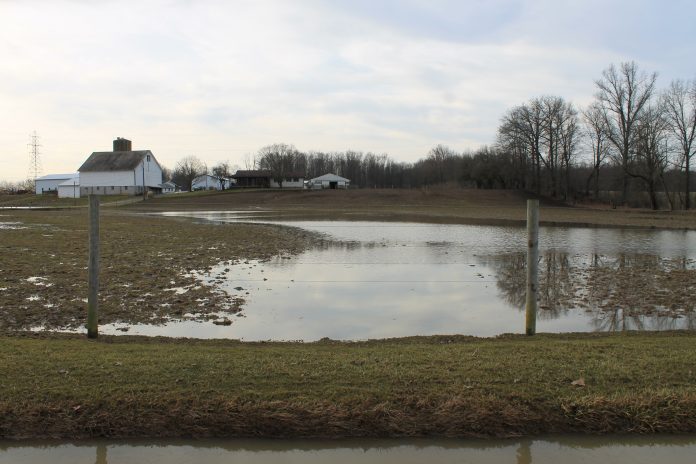Following one of the wettest years on record, homeowners may want to evaluate their property. Flooding and heavy rains can cause damage to foundations, private water wells and septic systems. Find out what to inspect and test following increased rainfall and learn how to properly evaluate and respond to water damage.
What should you be concerned about?
Any water problem can be serious for a homeowner. Some are more obvious, while other issues can go unnoticed. For example, you’re likely to realize your foundation or the drainage system around it is compromised when water can get inside. Flood damage to septic systems and private wells can take much longer to notice.
Inspecting your well
If areas of your property have recently experienced heavy rains or flooding, it’s a good idea to inspect your private water well. If the appearance, smell or taste of your drinking water changed following the recent rain, you should inspect your well and have your drinking water tested.
To inspect your well and respond to flood damage follow these steps:
- Turn off power to your well.
- Look for signs of flood damage.
– The well casing is cracked or shifted.
– The well cap is missing or damaged.
– There are erosion or mud deposits around the well casing, inside the well pit if your casing terminates below ground, or inside the well itself if the casing was topped by floodwaters. - If you notice signs of damage, you’ll have to determine whether or not you can fix it yourself.
– In the incidence of minor erosion around the casing, you may be able to correct the problem yourself by regrading and reseeding around the area by packing dirt around the pipe in the shape of a cone that will shed water away.
– If you discover more significant damage like a shifted casing or sediment in the well, repairs should be made by a licensed well driller or professional pump installer. - If you find that your well has been flooded, you should have your water tested and disinfected — if needed — by a licensed well driller or plumber. Water wells can become contaminated by harmful bacteria, such as coliform and E. coli bacteria, during a flood. It’s important to make sure yours is safe to drink.
- Boil all water used for drinking or cooking until your well is tested and cleared or disinfected.
Inspecting septic tanks and drainage fields
When heavy rains saturate your septic system’s soil absorption fields wastewater treatment can slow down or stop altogether. Once your septic system is flooded it may stop accepting household waste water. In some cases, flooded septic systems can cause backups inside your home. To avoid compounding the problem, you should look for signs of a flooded septic system during and after heavy rains.
Signs of a flooded septic system
- Water in your toilet or sink won’t drain.
- Your septic system is draining back into your basement.
- Your septic system is draining upwards into your lawn.
What should you do if you notice signs of a flooded septic system?
When you notice water is draining slowly or isn’t draining at all from your sink or toilet, you should stop using water in your house until the ground dries out. You should also have a professional inspect your septic tank and soil absorption field. Slow draining water is the first sign of more problems to come.
You don’t want to attempt pumping out the system yourself. It’s likely that water from the saturated soil will fill it again quickly, which may damage your septic tank and could release dangerous sewer gases.
What to do if your soil absorption field was covered by flood water, but your drains are functioning normally?
Once the flood water has receded, you can start using minimal water in your home again. As your drain field dries out completely, you can gradually resume normal water use.
When should you remove flood debris, fill in eroded areas and reseed your lawn?
Wait until your drain field has dried out completely to attempt any repairs. Trying to do so when the soil absorption field is still wet can cause damage from soil compaction.










